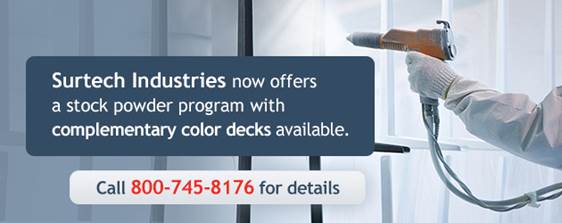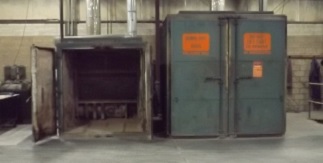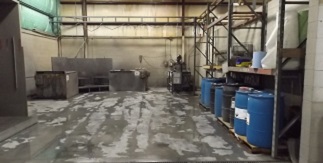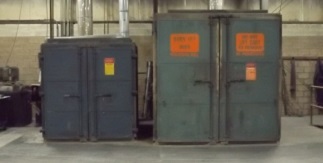
Powder Coating vs. Galvanizing
Choosing the right protective coating is essential for ensuring the maximum performance and longevity of metals such as iron and steel. Two of the most common coating processes are power coating and galvanizing — also known as hot-dip galvanizing. Each method offers several advantages and disadvantages.
What Is Powder Coating?
Powder coating entails the electrostatic application of a dry powder to the surface of the metal workpiece, followed by curing of the product to form a protective layer. Benefits of powder coating include the ability to form thicker coatings than is possible with paint or other liquid coatings. The dry application prevents sagging or running. Powder coating is also an environmentally friendly process, as the coatings contain no solvents and do not release volatile organic compounds (VOC) into the atmosphere.
What Is Galvanizing?
Hot-dip galvanizing involves the immersion of iron or steel workpieces into a bath of molten zinc heated to a temperature of approximately 840 F. The zinc alloys with the surface of the base metal to form a protective coating. The zinc reacts with the oxygen in the atmosphere to form zinc oxide. The most important benefit of hot-dip galvanization is enhanced protection against corrosion.
The Difference Between Galvanized and Powder Coating
A primary difference between galvanized and powder coating is the way they protect the surface of the workpiece. Galvanization provides sacrificial protection, meaning the coating will absorb corrosive materials before they can reach the metal object. Powder coating works by forming a protective barrier that prevents destructive materials from penetrating and reaching the surface.
The ability of hot-dip galvanization to deter corrosion makes it an excellent choice for protecting outdoor objects that are vulnerable to the elements, such as iron and steel gates, fences and guardrails. However, powder coating offers greater flexibility for decorative applications — coatings are available in numerous colors and textures — making it better suited for indoor products. Various pretreatment methods are also available to bolster the powder coating’s corrosion protection capabilities.
Powder Coat vs. Galvanized Cost
In general, the initial cost of hot-dip galvanization is higher than powder coating. Factors that influence cost include coating thickness, types of materials used, the application of pretreatment processes and the current price of zinc. Galvanizing tends to result in lower long-term maintenance costs, although properly treated powder coats can often match galvanization when it comes to durability.
Using Galvanization and Powder Coating Together
It’s possible to combine hot-dip galvanizing with powder coating to form a duplex system for protecting metal materials. The galvanized zinc serves as a base coating that enhances corrosion protection. The powder coating provides a top layer that slows down the rate in which corrosion consumes the underlying zinc. The powder coating can also improve the aesthetic appeal of the metal object.
Contact Surtech to Learn More About the Difference Between Galvanized and Powder Coating
As a leading provider of powder coating and other high-quality metal finishing services, Surtech can help you understand the difference between galvanized and powder coating. Contact us to learn more today.



Contact Us!
- Address:
- 915 Borom Rd.
York, PA17404 - Phone:
- 717-767-6808
1-800-745-8176 - Online:
- Contact Us to request a free quote!
- Employee Directory:
- View our Employee Directory.